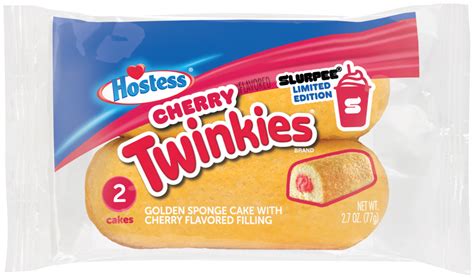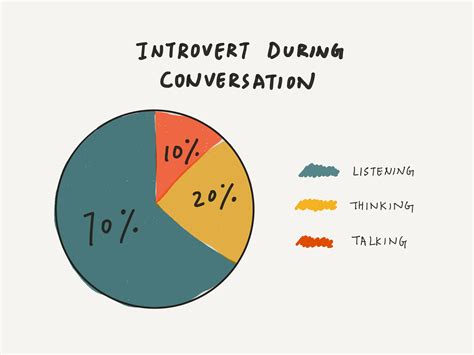
Little Debbie’s latest bakery treat, Vanilla Crèmes, is drawing comparisons to Hostess Twinkies, sparking a frenzy among snack enthusiasts who are eager to taste and share their opinions on social media. The buzz surrounding the new product indicates a potential challenge to the long-standing dominance of Twinkies in the snack cake market.
McKee Foods, the maker of Little Debbie snacks, has released Vanilla Crèmes as a new addition to its lineup, prompting immediate reactions from consumers who note its resemblance to the iconic Twinkie. Photos and reviews are flooding social media platforms, with many users comparing the taste, texture, and overall experience of Vanilla Crèmes to that of the Hostess classic. According to Yahoo Lifestyle, the initial response suggests that Little Debbie may have created a worthy competitor in the realm of crème-filled snack cakes.
The release of Vanilla Crèmes comes at a time when the snack food industry is experiencing significant innovation and competition. Companies are constantly seeking to introduce new products that capture consumers’ attention and cater to evolving tastes. Little Debbie, known for its affordable and widely accessible treats, has a history of successfully launching popular snack items, and the initial reception to Vanilla Crèmes suggests that it could be another hit for the brand.
The comparison to Twinkies is not just about the product itself; it also taps into nostalgia and cultural significance. Twinkies have been a staple in American snack culture for decades, and any product that evokes a similar experience is bound to attract attention. The social media frenzy surrounding Vanilla Crèmes reflects the power of nostalgia and the emotional connection that consumers have with familiar snack foods.
The availability of Vanilla Crèmes appears to be widespread, with reports of the snack being found in major retailers across the country. This accessibility is a key factor in Little Debbie’s success, as it ensures that a large number of consumers have the opportunity to try the new product and form their own opinions. The ease of access, combined with the buzz generated on social media, is likely to drive strong sales in the initial weeks following the launch.
The long-term impact of Vanilla Crèmes on the snack cake market remains to be seen. While the initial response has been positive, it is important for Little Debbie to maintain consistent quality and availability in order to sustain the momentum. Hostess, with its established brand recognition and loyal customer base, will undoubtedly respond to the challenge posed by Vanilla Crèmes. The competition between the two brands could lead to further innovation and improvements in the snack cake category, ultimately benefiting consumers.
Detailed Analysis and Background Information
The introduction of Little Debbie’s Vanilla Crèmes has ignited a classic battle in the snack food arena, pitting a newcomer against a long-reigning champion. While the immediate narrative focuses on the resemblance to Hostess Twinkies, a deeper examination reveals strategic implications for both McKee Foods and the broader snack industry.
McKee Foods and the Little Debbie Brand:
McKee Foods, the privately held company behind Little Debbie, has built a reputation for providing affordable and accessible snack cakes. Founded in 1934, the company has grown from a small family business into a major player in the snack food market. Little Debbie products are known for their distinctive packaging, featuring the image of the founder’s granddaughter, and their wide availability in grocery stores, convenience stores, and vending machines.
The success of Little Debbie is rooted in its ability to offer value to consumers. The snacks are typically priced lower than competing products, making them an attractive option for budget-conscious shoppers. This affordability does not come at the expense of quality, as Little Debbie has consistently maintained a reputation for producing tasty and satisfying snacks.
The launch of Vanilla Crèmes aligns with Little Debbie’s strategy of introducing new products that appeal to a broad audience. The company has a history of successfully launching popular snack items, such as Oatmeal Creme Pies, Swiss Rolls, and Nutty Bars. These products have become staples in American households, and Little Debbie has cultivated a loyal customer base over the years.
Hostess Brands and the Twinkie Legacy:
Hostess Brands, the maker of Twinkies, has a long and storied history in the snack food industry. The company was founded in 1919 and has been producing Twinkies since 1930. Twinkies have become an iconic American snack, known for their golden sponge cake and creamy filling.
Over the years, Twinkies have faced challenges, including financial difficulties that led to the company’s bankruptcy in 2012. However, the brand was revived under new ownership, and Twinkies continue to be a popular snack item. Hostess has also expanded its product line to include other snack cakes, such as Ding Dongs and Ho Hos.
The Twinkie’s enduring appeal lies in its familiarity and nostalgia. For many consumers, Twinkies evoke memories of childhood and simpler times. The snack has also been featured in popular culture, further solidifying its status as an American icon.
The Snack Cake Market Landscape:
The snack cake market is a highly competitive segment of the food industry. Companies are constantly vying for consumers’ attention with new products, flavors, and marketing campaigns. The market is driven by trends such as convenience, indulgence, and health consciousness.
Consumers are increasingly looking for snacks that are easy to eat on the go and that provide a quick energy boost. Snack cakes fit this need perfectly, as they are individually packaged and can be consumed without utensils. The indulgence factor is also important, as consumers often turn to snacks as a treat or reward.
While health consciousness is growing, there is still a strong demand for traditional snack cakes. However, companies are also responding to the health trend by offering healthier alternatives, such as reduced-sugar or gluten-free options.
The Vanilla Crèmes vs. Twinkies Comparison:
The comparison between Vanilla Crèmes and Twinkies is inevitable, given their similar appearance and flavor profile. Both snacks consist of a golden sponge cake filled with a creamy vanilla filling. However, there are also some key differences between the two products.
One difference is the texture of the cake. Some consumers have noted that the Vanilla Crèmes cake is slightly denser than the Twinkies cake. The filling may also differ in terms of sweetness and consistency. Ultimately, the preference for one snack over the other comes down to individual taste.
The price point is another factor that could influence consumers’ choices. Little Debbie products are typically priced lower than Hostess products, which could make Vanilla Crèmes an attractive option for budget-conscious shoppers.
Social Media and Consumer Response:
Social media has played a significant role in the buzz surrounding Vanilla Crèmes. Consumers have been sharing photos and reviews of the snack on platforms such as Twitter, Instagram, and Facebook. The hashtag #VanillaCremes has been used to track the conversation and gauge consumer sentiment.
The social media response has been largely positive, with many consumers expressing excitement about the new snack. Some users have even declared Vanilla Crèmes to be superior to Twinkies. However, there have also been some mixed reviews, with some consumers finding the snack to be too sweet or not as flavorful as they had hoped.
The social media buzz is likely to drive trial and awareness of Vanilla Crèmes. Consumers who see positive reviews online may be more inclined to purchase the snack and try it for themselves. The social media conversation also provides valuable feedback to Little Debbie, allowing the company to understand consumer preferences and make adjustments to the product if necessary.
Implications for the Snack Food Industry:
The launch of Vanilla Crèmes has several implications for the snack food industry. First, it demonstrates the continued demand for traditional snack cakes. Despite the growing popularity of healthier snack options, there is still a strong market for indulgent treats like Twinkies and Vanilla Crèmes.
Second, the success of Vanilla Crèmes could put pressure on Hostess to innovate and improve its products. Hostess may need to consider reformulating Twinkies or introducing new flavors to stay competitive.
Third, the Vanilla Crèmes launch highlights the importance of social media in the snack food industry. Companies that can effectively leverage social media to generate buzz and engage with consumers are more likely to succeed in the market.
The Future of Vanilla Crèmes:
The future of Vanilla Crèmes depends on several factors, including the company’s ability to maintain consistent quality, manage inventory effectively, and respond to consumer feedback. If Little Debbie can execute these strategies successfully, Vanilla Crèmes has the potential to become a long-term success story.
The company may also consider expanding the Vanilla Crèmes product line by introducing new flavors or sizes. This could help to broaden the appeal of the snack and attract new customers.
Ultimately, the success of Vanilla Crèmes will depend on its ability to deliver a satisfying and enjoyable snack experience to consumers. If the snack can live up to the hype and meet consumer expectations, it has the potential to become a beloved classic in the years to come.
Expanded Context and Industry Dynamics:
The launch of Little Debbie’s Vanilla Crèmes occurs within a broader context of evolving consumer preferences, increased competition, and changing distribution channels in the snack food industry. To fully appreciate the significance of this new product, it’s essential to understand these dynamics.
Evolving Consumer Preferences:
Today’s consumers are more discerning than ever before. They seek a balance between indulgence, convenience, and health, leading to a fragmented market where no single product can satisfy everyone. Key trends influencing consumer preferences include:
- Health and Wellness: Growing awareness of the link between diet and health has driven demand for snacks with reduced sugar, fat, and sodium content. Products with natural or organic ingredients are also gaining traction.
- Convenience: Busy lifestyles have increased the demand for portable and ready-to-eat snacks. Single-serve packaging and on-the-go formats are highly valued.
- Flavor Exploration: Consumers are increasingly adventurous and willing to try new and exotic flavors. Ethnic-inspired snacks and unique flavor combinations are becoming more popular.
- Transparency: Consumers want to know where their food comes from and how it’s made. They seek products with clear labeling and ethical sourcing practices.
- Nostalgia: Amidst rapid change, consumers often seek comfort in familiar and nostalgic brands. Classic snacks that evoke childhood memories can be particularly appealing.
Increased Competition:
The snack food industry is characterized by intense competition among established players and emerging brands. This competition is driven by factors such as:
- Product Proliferation: The market is flooded with new snack products, making it difficult for any single product to stand out.
- Price Wars: Intense competition often leads to price wars, which can erode profit margins.
- Consolidation: Mergers and acquisitions are common in the snack food industry, as companies seek to gain scale and efficiency.
- Private Label Growth: Private label brands are gaining market share, offering consumers lower-priced alternatives to national brands.
Changing Distribution Channels:
The way snacks are distributed and sold is also changing rapidly. Key trends include:
- E-Commerce: Online sales of snacks are growing rapidly, offering consumers greater convenience and choice.
- Mobile Commerce: Mobile devices are becoming increasingly important for snack purchases, as consumers use their smartphones and tablets to browse and buy snacks.
- Subscription Services: Snack subscription services are gaining popularity, offering consumers curated selections of snacks delivered to their doorsteps.
- Alternative Retail Channels: Snacks are increasingly sold in non-traditional retail channels, such as convenience stores, drugstores, and vending machines.
Little Debbie’s Strategy in the Context of These Trends:
In light of these trends, Little Debbie’s strategy with Vanilla Crèmes appears to be a deliberate attempt to capitalize on the nostalgia trend while offering a value proposition that appeals to budget-conscious consumers. By creating a product that closely resembles Twinkies but is likely priced lower, Little Debbie aims to capture a share of the market from the established brand.
However, Little Debbie also faces challenges. The company needs to ensure that Vanilla Crèmes meets consumer expectations in terms of taste and quality. It also needs to effectively market the product to create awareness and generate trial. Finally, it needs to manage its supply chain to ensure that Vanilla Crèmes is available to consumers in a timely and efficient manner.
Hostess’s Response:
Hostess is likely to respond to the challenge posed by Vanilla Crèmes in several ways. These could include:
- Marketing: Hostess could launch a marketing campaign to remind consumers of the unique qualities and heritage of Twinkies.
- Product Innovation: Hostess could introduce new flavors or varieties of Twinkies to appeal to a wider range of consumers.
- Price Adjustments: Hostess could adjust its pricing to compete more effectively with Vanilla Crèmes.
- Distribution Expansion: Hostess could expand its distribution network to ensure that Twinkies are available in more retail outlets.
The battle between Little Debbie and Hostess will be closely watched by the snack food industry. The outcome will depend on a variety of factors, including consumer preferences, marketing effectiveness, and distribution capabilities.
Conclusion:
The introduction of Little Debbie’s Vanilla Crèmes represents a significant development in the snack cake market. While comparisons to Hostess Twinkies are inevitable, the success of Vanilla Crèmes will depend on its ability to stand on its own merits and appeal to consumers’ evolving preferences. The competition between Little Debbie and Hostess is likely to intensify, leading to further innovation and ultimately benefiting consumers. The snack food industry remains dynamic and competitive, and companies that can adapt to changing trends and deliver value to consumers are most likely to succeed. The Vanilla Crèmes launch underscores the enduring appeal of classic snack cakes and the power of nostalgia in shaping consumer choices. It also highlights the importance of social media in driving awareness and shaping perceptions of new products. As the snack food market continues to evolve, companies will need to remain agile and innovative to stay ahead of the competition.
Frequently Asked Questions (FAQs):
1. What are Little Debbie Vanilla Crèmes and why are they being compared to Hostess Twinkies?
Little Debbie Vanilla Crèmes are a new snack cake product from McKee Foods, the maker of Little Debbie snacks. They consist of a golden sponge cake filled with a creamy vanilla filling. They are being compared to Hostess Twinkies because of their similar appearance, flavor profile, and overall concept as a crème-filled snack cake. Both snacks feature a light-colored sponge cake with a sweet, creamy filling.
2. Where can I buy Little Debbie Vanilla Crèmes?
According to reports, Little Debbie Vanilla Crèmes are widely available at major retailers across the United States, including grocery stores, convenience stores, and possibly vending machines where Little Debbie products are typically sold. Availability may vary by location, so it’s recommended to check with local stores.
3. How do Little Debbie Vanilla Crèmes differ from Hostess Twinkies in terms of taste and texture?
While both snacks are similar, some consumers have noted differences in taste and texture. Some reviews suggest that the cake in Vanilla Crèmes is slightly denser than the Twinkies cake. The filling may also have variations in sweetness and consistency. Taste is subjective, so it ultimately comes down to individual preference.
4. How has social media influenced the popularity of Little Debbie Vanilla Crèmes?
Social media has played a crucial role in generating buzz and awareness for Vanilla Crèmes. Consumers have been sharing photos, reviews, and comparisons to Twinkies on platforms like Twitter, Instagram, and Facebook. This online conversation has helped to drive trial and awareness of the new snack. The hashtag #VanillaCremes helps track consumer sentiment. Positive reviews and mentions on social media can encourage others to try the product.
5. What does the launch of Vanilla Crèmes mean for the snack cake market and the competition between Little Debbie and Hostess?
The launch of Vanilla Crèmes introduces increased competition into the snack cake market. It potentially challenges Hostess’s dominance with Twinkies. Little Debbie’s value proposition (often lower prices) combined with a similar product could attract budget-conscious consumers. This competition may drive both companies to innovate and improve their products to maintain or gain market share, ultimately benefiting consumers with more variety and potentially better quality or pricing. It also highlights the continued demand for classic snack cakes, even amidst healthier alternatives.









